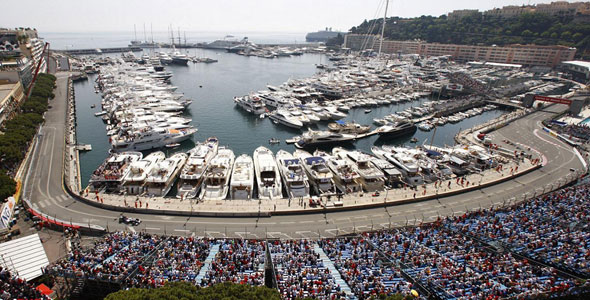“If everything seems under control, you’re not going fast enough.” ― Mario Andretti
If you’re looking for high performance business inspiration look no further than the Monaco Grand Prix – an annual Formula One (F1) motor race held at the Circuit de Monaco, a street circuit that runs through the principality of Monaco, located on the French Riviera. It is an all-important fixture within the global money-making juggernaut that is F1.
According to the Lotus F1 Team, a British Formula One racing team, “The Monaco Grand Prix is one of the most prestigious occasions on the sporting calendar; an event like no other, and a venue that can only be described as truly magical…” This year’s race, held on Sunday, May 26th, is the sixth round of the 2013 season, and marks the seventy-second time the Monaco Grand Prix has been held.
Regardless of which industry you’re in, one of the most prestigious automobile races in the world can provide keen insights on how to kick your business into high gear. Here are six fast and furious business lessons you don’t want to miss:
1. To compete at the highest level, start from square one.
Dedicate your life to your craft. F1 journalist Brad Spurgeon suggests, “virtually all of F1 drivers start out racing as children in go-karts. Karting is the best school for racing because it is F1 in miniature: Competition, mechanics, driving skills, human relations – everything a driver must know to race at the highest level starts at the lowest level.”
While you don’t have to be a child prodigy to start a successful business, it’s important to dedicate yourself to the most important task at hand, learning and applying basic business principles.
2. Develop a “starting grid” business strategy.
In auto racing the starting grid is the marked section of the track (at the start) where the cars line up according to their times in practice, the fastest occupying the front position. In F1 many consider the starting grid the “most exciting place on earth in the half hour before a Grand Prix starts … as teams line up their cars surrounded by mechanics, engineers, team owners and sponsor VIPS,” according to Spurgeon.
Take a page from the auto racing playbook and create a starting grid experience for product launches and target goals. Identify, position, and empower the front runners of your team to take leadership positions on new initiatives and task them with delivering on your objectives.
Most importantly, foster an energized company culture that celebrates performance by your own display of enthusiasm, visionary pursuit and listen-to-learn communication.
3. Put the best cars with the best drivers.
What wins a race? Is it the car or the driver?
According to F1 journalist Brad Spurgeon, “Teams spend millions on car technology to produce tiny advantages in speed. They also pay millions to drivers.” But many drivers attest to this simple strategy: “the trick is to put the best cars with the best drivers.”
The same could be said of your small business. Are you matching your team with tasks based on their illustrated capabilities? Do you have employees functioning in roles that are best suited for their skill levels? If not, you are likely pushing square pegs into round holes, which can hamper your team’s performance before they even begin.
© YFS Magazine. All Rights Reserved. Copying prohibited. All material is protected by U.S. and international copyright laws. Unauthorized reproduction or distribution of this material is prohibited. Sharing of this material under Attribution-NonCommercial-NoDerivatives 4.0 International terms, listed here, is permitted.







